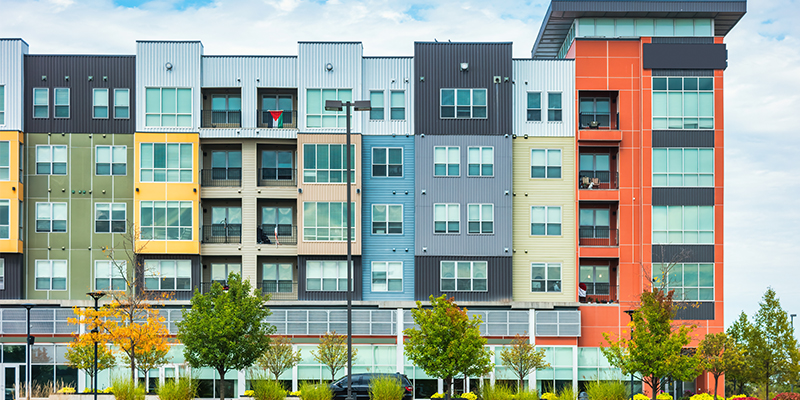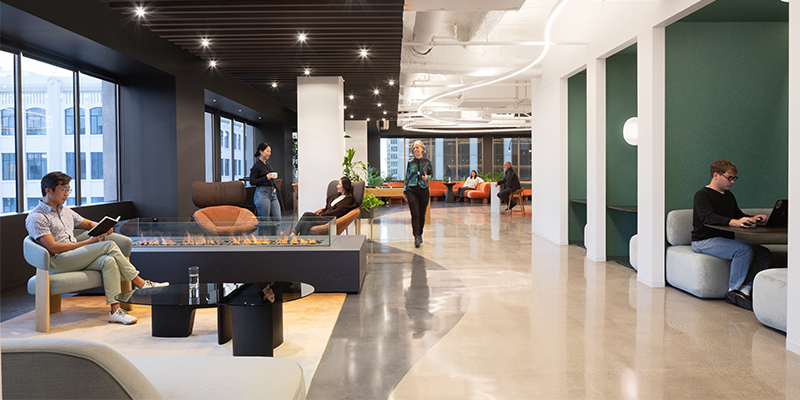A panel of experts took on the biggest challenges in industrial real estate in the closing panel of the first day of I.CON West 2021, held this week in Long Beach, California. From supply chain stressors to volatile pricing to labor shortages and building design, the issues seem bigger than ever for commercial real estate’s hottest sector. Here’s what these industrial leaders had to say on these topics:
Supply chain challenges: Moderator Jim Camp, senior managing director with The Rockefeller Group, said there are around 56 container ships currently backed up at the Port of Los Angeles. From empty store shelves to manufacturer slowdowns because of needed electronic components, supply and demand imbalances are deeply affecting industrial tenants.
David Willett, head of North American fulfillment center real estate with retailer Wayfair, said that it’s no surprise that the pandemic benefitted e-commerce, as it drove buyers online when they didn’t feel comfortable going to stores. The supply chain disruption somewhat impacted Wayfair’s ability to secure product, but fortunately the company was prepared with an inventory that allowed them to continue to deliver with speed. Willet said Wayfair offers end-to-end solutions, from supplier to end user, including eight freight services from Asia, which strengthens their ability to support delivery networks in the U.S., the United Kingdom and Germany.
Scott Recknor, partner/head of U.S. asset management, Ares Real Estate Group, said that tenants are under more duress than ever, with an aging supply chain and the added stress of COVID-19. “We’re asking tenants to look further into the future than ever before, order goods in advance to meet unknown demand, and project their future space needs. That’s nearly impossible with historically high demand and low inventory,” he said.
Spikes in Rent and Demand: With 17 billion square feet of industrial space in the U.S., 400 million more under construction and an additional 400 million planned, it’s hard to believe that absorption is keeping pace with completions.
Scott Maxwell, managing principal with Cresa, said that tenants ending seven or 10-year lease terms could see anywhere from a 40-100% rent increase, in addition to higher transportation costs. “The supply chain isn’t just in time, it’s just in case that next container doesn’t come in,” he said, noting that increases in inventory mean tenants want more space in the same building, which isn’t always possible.
Recknor said that tenants are far more educated than before, with more comps to consider and information at their fingertips. “Transparency is key. The pendulum swings both ways, and right now it’s on the side of the landlord. It will swing back at some point and be on the side of the tenant. At the end of the day, this is a relationship business and how we treat our tenants matters. When the pendulum is on their side, we’re going to want them to be fair to us.”
From a tenant’s point of view, Willett said Wayfair looks at as many markets as it can to build out its network and increase its ability to reach major pockets of the population for fast delivery. The company works with multiple partners to create a competitive process and drive the best deal in select markets, starting 24-30 months out to identify as many options as possible. “We are entering into long-term relationships,” he said. “We don’t want to fight over pennies. We would rather create a deal where both the landlord and our company consider it a win, so we feel good about working together in the future.”
Willett says that real estate is not always the most important part. “Without access to quality labor and talent pool, plus transportation to get them there, the site is useless,” he said.
Building Design and Location: Location is a critical element for any industrial development, whether the property is for manufacturing, distribution or cold storage. Maxwell says developers must act fast in identifying available locations in the tight Southern California market, and noted that making sure the property is outfitted with the right infrastructure – from tech to water to power – takes time and money.
Predicting the Future: The four panelists shared their thoughts for what’s to come for industrial real estate in the next 12-24 months. With pent-up demand and higher savings than ever for consumers, all expect strong demand to continue for at least 2-3 years.
Eric Safko, CEO of ARCO Design/Build, said that the construction industry would benefit from stabilization and increased availability of construction materials. “Unless interest rates go in a different direction, we are going to be busier than ever in 2022 with a steady increase in the country’s e-commerce demand. We have a healthy run ahead of us.”
Recknor believes that sustained demand and rising costs for tenants will be passed along in greater proportions to the consumer. He said that municipality mandates and restrictions for everything for increased solar usage to reduced trucking emissions will have an impact on communities where developers and operators choose to do business.
Willet said he believes labor remains the greatest challenge. “It’s not getting people back to work, but it’s hiring the right people. On the warehouse side, it’s a critical component.” While automation can fill the gaps in some warehouses and fulfillment centers, it doesn’t work for all products.
“As markets continue to expand and grow, it’s going to be tough to compete without the ability to provide tenants key access to a strong labor force.”
This post is brought to you by JLL, the social media and conference blog sponsor of NAIOP’s I.CON West 2021. Learn more about JLL at www.us.jll.com or www.jll.ca.









